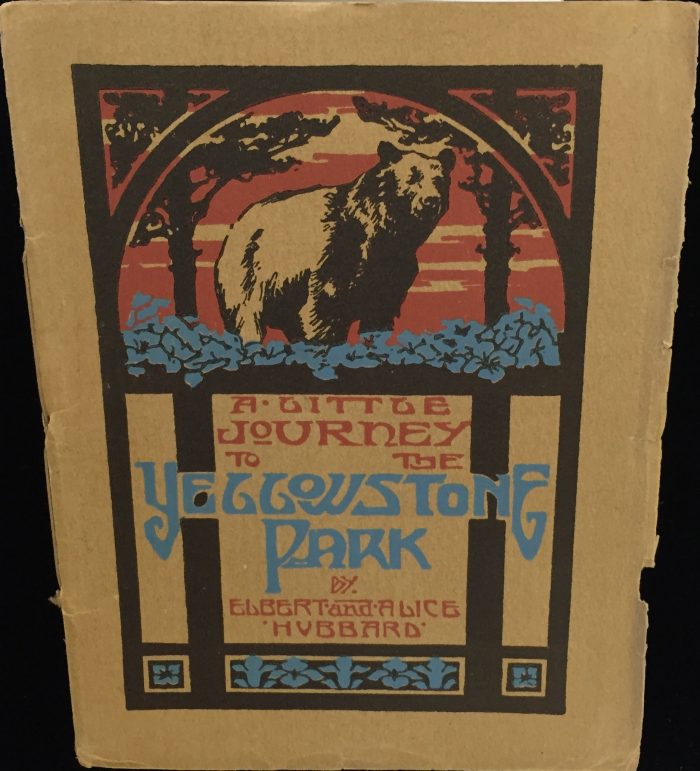Posted On: February 18, 2016
By Lynda Claassen, Director of Special Collections & Archives
This year marks the 100th anniversary of the establishment of the National Park Service, and the Library’s Special Collections & Archives is exhibiting items that illustrate some of California’s magnificent national parks and monuments. The exhibition, “Wondrous Manifestations of Nature: Celebrating California’s National Parks” is on view until April 2016, on the main floor of Geisel Library.
August 1916, President Woodrow Wilson signed the act creating the National Park Service, a new federal bureau within the Department of the Interior. The Service would be responsible for protecting the 25 national parks and monuments already established and managed by the Department, as well as those yet to be established. The Service was to “conserve the scenery and the natural and historic objects and the wild life therein and to provide for the enjoyment of the same in such manner and by such means as will leave them unimpaired for the enjoyment of future generations.”
The act of 1916 followed many years of lobbying and legislation that had already set aside various lands as “public parks.” In 1872, Yellowstone had been established in the territories of Montana and Wyoming as a “public park or pleasuring-ground for the benefit and enjoyment of the people.” In the years following Yellowstone’s establishment, additional national parks and monuments were established and administered by the Department of the Interior, the War Department, or the Department of Agriculture. President William Howard Taft in 1912 had recommended to Congress the establishment of a bureau for the “proper management of those wondrous manifestations of nature, so startling and so beautiful that everyone recognizes the obligation of the Government to preserve them for the edification and recreation of the people.” The act of 1916 finally unified the management of all federal parklands.

California is rich in national parks and monuments, and this exhibition focuses on some of California’s most popular parks—Yosemite, Death Valley, Joshua Tree, Kings Canyon and Sequoia–through historic photographs, texts, and documents, all inspired by those “wondrous manifestations.” George Wingate’s Through the Yellowstone Park on Horseback (1886) and Albert Guptill’s A Ramble in Wonderland (1892) illustrate the popular exploration of Yellowstone, the nation’s first national park and set the stage for the remainder of the exhibiton. The 1874 “dime novel” The Boy Miners, or The Enchanted Island: A Tale of the Yellowstone Country, with its colorful cover, demonstrates the incorporation of the western landscape into the popular imagination.
Highlights of the exhibited materials include a 1910 manuscript letter from John Muir to Clara Burrus stating his wish to get back to Yosemite after he completes writing a book. The Voice of the Valley, written of Japanese poet Yone Noguchi in 1897, includes an illustration by California tonalist painter William Keith. A charming watercolor of Death Valley by internationally renowned composer Ernst Krenek reveals Krenek’s mastery of a second art form. Brochures published by the railroads that touted Western travel and tourism include maps and early photographs of a number of California parks. Photographer David Wing’s searing photographs of Death Valley remind the viewer of the isolation that can be found in the desert; the photographs are housed in a linen bag, reminiscent of the water bags carried by early desert explorers. Ansel Adams’ photographs of Yosemite document Adams’ long association with California’s most famous and most popular park. The High Sierra of California (2000) includes excerpts from the Sierra journals of John Muir and poet Gary Snyder and is illustrated with magnificent color woodcuts by Tom Killion.
A personal favorite included in the exhibition is John Muir’s album of “ferns of the west.” The album contains some 20 mounted specimens of ferns collected by Muir throughout the west and southwest. Muir made the album for Mary Jane Talley of Julian, California, labeling each specimen with its name and the date and location of its collection. The album was passed down in the Talley/Perdue family and eventually given to the San Diego Historical Society (now the San Diego Research Center) in 1939. In 1968, to honor the establishment of Muir College, the Historical Society donated the album to UC San Diego. Because of its history and its provenance, it remains a treasured item in Special Collections & Archives.

